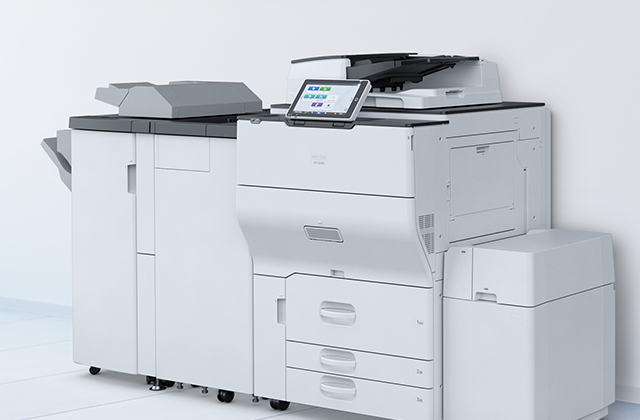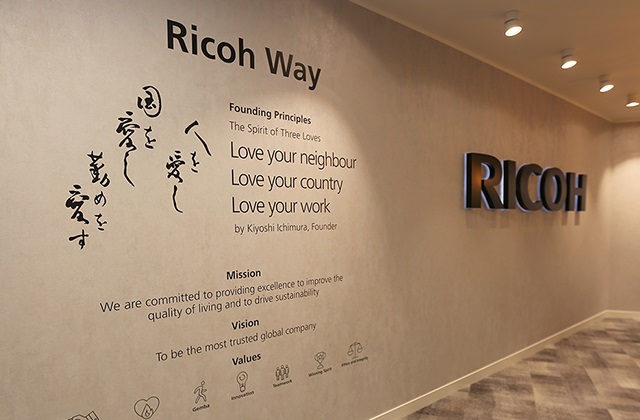Why digital printing will complement – not kill – offset
By David Mills, CEO, Ricoh Europe
Ricoh Europe, London, 19 April 2016 – As the printing industry continues its evolution into the digital age – some might say reinvention – one dependable constant is that there will always be ample discussion around market trends and predictions for the future. And it’s easy to see why. Who wouldn’t want to know which innovations will emerge to make our working lives easier, performances better and the companies we represent more successful? While some visions of the future prove the safest of bets based on robust developments that have occurred over a set period of time, others, meanwhile, are almost the stuff of science fiction. That’s not to say the latter doesn’t come to fruition in some form from time to time; 20 years ago few of us imagined we would one day be transferring money through a mobile phone.
More often than not a new piece of technology renders its predecessor obsolete – a natural outcome of our relentless pursuit for faster, more powerful and advanced tools to get the job done. Nostalgia aside, surely there aren’t many of us who miss the limitations of the typewriter, floppy disk or dial-up modem?
But it’s worth remembering that video didn’t kill radio – and digital printing won’t kill offset. The fact is digital printing is thriving across a range of media. What’s more, it is complementing offset.
From advertising to labels to magazines, insight from Heidelberg reveals that digital printing is set to continue its growth across all applications up to and beyond 2020.
The process has certainly come a long way since its inception in the early 1990s.
There was a time when, to some people, digital printing meant negotiating on quality. That’s simply not the case today. With traditional plates and film redundant, digital printing offers a quicker route to job delivery. It also allows businesses to save money by only printing the exact quantity required. Perhaps the biggest advantage of digital is that data can be easily stored and updated, allowing changes to be made as needed, thus reducing the scope for waste. But while compelling, the benefits of digital actually highlight the significant value of offset printing. Good for long-run jobs with static content, the combination of digital and offset enable print service providers to become one-stop shops.
Today, print service providers are more concerned about how they adopt digital printing as effectively as possible. But in addition to integration, the obstacle of future-proofing major investment decisions such as a new digital print production system can prove difficult to overcome. Here, expert insight is the answer.
To be a master of the digital print and communications environment, businesses want partners who understand the full set of complexities and challenges. They rightly expect more than great hardware and software solutions that facilitate fast turnaround printing of the highest quality. They expect to receive a personalised service and expert insight with recommendations that fuel their future growth and success.
The trick is to harness the power of digital print, data and innovative new technologies for multichannel production and communications environments. This allows print service providers to transform, optimise and expand their business. Key to this is connectivity across platforms and technologies, including the cloud, digital and offset-based systems.
With drupa 2016 less than two months away, the latest batch of industry innovations are on the horizon. There’s no doubt that digital printing will be at the heart of this not only at drupa but for many years to come.
| About Ricoh |
Ricoh is empowering digital workplaces using innovative technologies and services that enable individuals to work smarter from anywhere.
With cultivated knowledge and organizational capabilities nurtured over its 85-year history, Ricoh is a leading provider of digital services, information management, and print and imaging solutions designed to support digital transformation and optimize business performance.
Headquartered in Tokyo, Ricoh Group has major operations throughout the world and its products and services now reach customers in approximately 200 countries and regions. In the financial year ended March 2022, Ricoh Group had worldwide sales of 1,758 billion yen (approx. 14.5 billion USD).
For further information, please visit www.ricoh-europe.com
© 2023 RICOH COMPANY, LTD. All rights reserved. All referenced product names are the trademarks of their respective companies.
For further information, please contact:
Ricoh Europe PLC
Charlotte Fernandez
E-mail: media@ricoh-europe.com
Homepage: www.ricoh-europe.com
Join us on Facebook: www.facebook.com/ricoheurope
Follow us on Twitter: www.twitter.com/ricoheurope
Follow us on LinkedIn: http://linkedin.com/company/ricoh-europe
Visit the Ricoh media centre at: www.ricoh-europe.com/press














